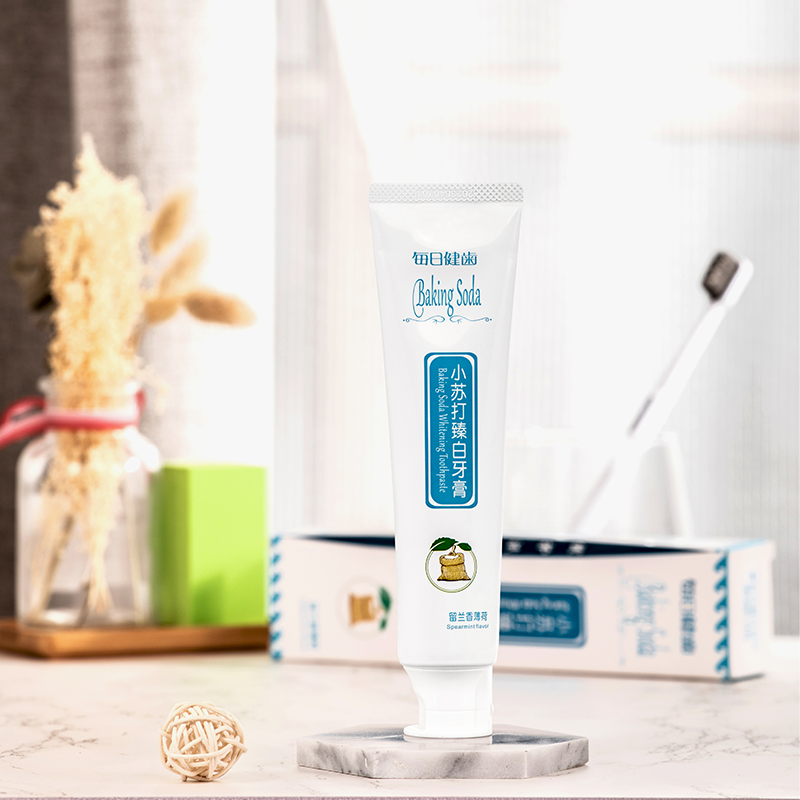Methods for making toothpaste with baking soda
Currently, many manufacturers use tetrasodium pyrophosphate to make soda toothpaste containing tartar pyrophosphate for prevention and treatment, the composition dissolves tetrasodium pyrophosphate less than 20% of the total amount.Sometimes also called tartar, is a deposit that can form on the surface of the gums.Supragingival calculi occur primarily in the vicinity of the large salivary gland tubes, such as the lower row of anterior teeth on the lateral surface of the tongue and the upper first and second grinding teeth on the lateral surface of the cheek, as well as on the distal surface of the posterior grinding teeth.The inorganic components of mature calculus are primarily composed of calcium phosphate, which has a hydroxyphosphate crystal lattice structure similar to bone, enamel, and dental pulp.It also contains some organic components, including exfoliated epithelial cells, white blood cells, salivary sediments, food waste, and many types of microorganisms.As mature tartar develops, staining or discoloration occurs without foreign reagents.It shows a distinct white or yellowish color, which is very unsightly.Regular mechanical removal of tartar by a dentist is common practice in dental departments.A variety of chemical and biological reagents have also been proposed to prevent the formation of stones or to remove them once they have formed.For example, pyrophosphate is a chemical that is known to inhibit the formation of tartar.There are also some known toothpaste compositions containing pyrophosphates and sodium carbonate (aka, baking soda).
Toothpaste manufacturer reminds that the toothpaste processing method requires obtaining a stable toothpaste composition that can be effectively formed from inhibiting tartar and contains sodium carbonate and sodium pyrophosphate tetratrate.Once dissolved in these toothpaste compositions, the pyrophosphates can readily recrystallize as sodium pyrophosphate tetrate decahydrate.These crystals can grow into large glass particles, which are not pretty, but also have tartar-fighting effects.This means that the alkali metal salt pyrophosphate is released from the sodium carbonate.Thus, in the last Ning composition obtained, the dissolved pyrophosphates were contained in smaller quantities, and the residues were insoluble crystalline particles of sodium pyrophosphate decahydrate taken from sodium carbonate.However, if these insoluble coke phosphate crystals appear during use and are diluted with water, they will quickly dissolve.According to this method, it was discovered that coke phosphates, which can be effectively used in cosmetics, can be obtained by other similar methods in this method, as well as some known toothpaste compositions containing pyrophosphates and sodium carbonate (aka, baking soda).
According to this method, it has been found that toothpaste compositions containing sodium carbonate pyrophosphate, which can be effectively used in cosmetics, can be prepared by other similar methods in this method.Dissolve the pyrophosphate first and then brine it to ensure that the mixture dissolves less than 20% pyrophosphate at any point in the process.When adding sodium pyrophosphate tetratrate to a mixture, it is best to control one or more of three process conditions.The three conditions are the temperature of the mixture and/or the pH of the mixture and/or the amount of components added to the mixture that do not contain sodium tetrate pyrophosphate.Thus, one of the goals of this method is to provide easily controlled preparation of stable toothpaste components containing sodium carbonate and pyrophosphate
Publication time: Feb-22-2024


